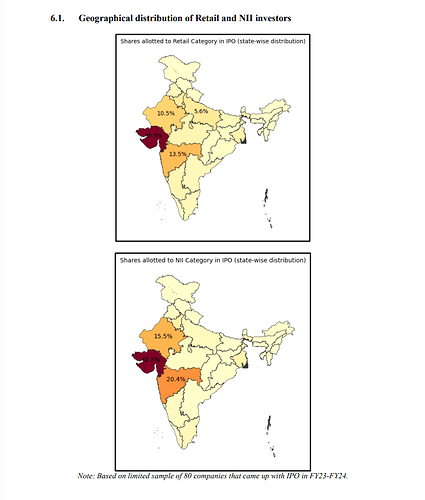SEBI yesterday released a study yesterday that highlights the flipping behaviour of investors in the IPO market. Here are some highlights:
Approximately 54% of IPO shares, by value, allotted to investors (excluding anchor investors) were sold within a week of listing.
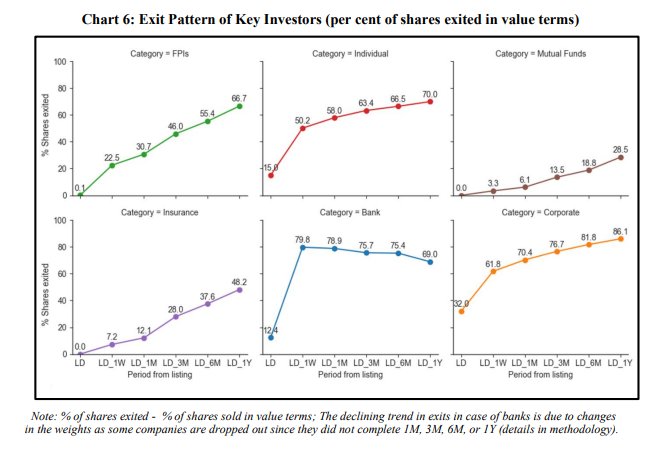
- Individual investors sold 50.2% of the shares allotted to them, by value, within a week of listing.
- Non-institutional investors (NIIs) (also known as High Networth Investors (HNIs)) sold 63.3% of their shares by value.
- Retail investors sold 42.7% of their shares by value.
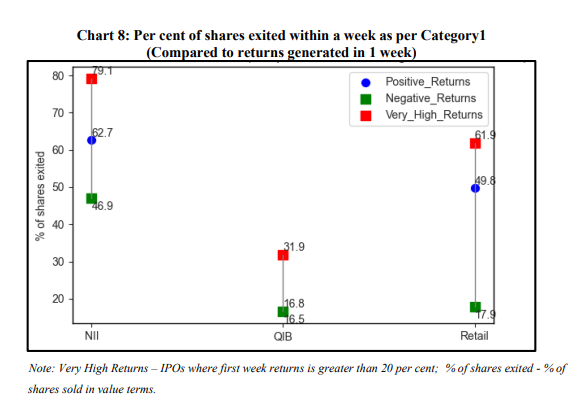
-
Mutual Funds tend to hold onto IPO shares for a longer period, whereas banks typically sell their shares more quickly. Mutual Funds sold only about 3.3% of their allotted shares by value within a week, compared to banks, which sold 79.8%.
-
Investors generally exhibit the “disposition effect,” showing a greater propensity to exit IPOs that exhibit positive listing gains rather than those that incur a loss on listing.
-
Individual investors were more likely to sell shares when they made a profit: they sold 67.6% of their shares by value within a week when returns exceeded 20%, but only 23.3% of shares when returns were negative.
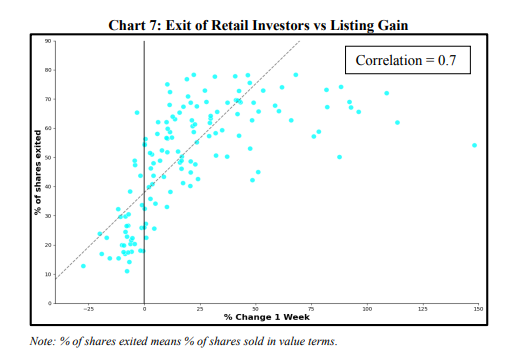
- Geographically, 39.3% of retail investors were from Gujarat, followed by Maharashtra (13.5%), and Rajasthan (10.5%).
-
Nearly half of all Demat accounts that applied for IPOs between April 2021 and December 2023 were opened post-COVID (i.e., during CY2021-CY2023).
-
In April 2022, SEBI and RBI introduced key policy measures, particularly affecting the NII category. SEBI changed the share allotment methodology for NIIs from a pro-rata basis to a lottery system and further divided the NII category (15% quota) into small-NII (5% quota) and big-NII (10% quota) categories. Concurrently, the RBI imposed restrictions on IPO funding by NBFCs, limiting it to ₹1 crore per borrower. These policy changes led to the following outcomes:
-
A reduction in over-subscription under the NII category, from 38 times to 17 times.
-
A decline in the number of IPO applications by “Big Ticket NII Investors” (those applying for more than ₹1 crore in IPOs), from around 626 applications per IPO in the pre-policy period (April 2021-March 2022) to 20 applications per IPO in the post-policy period (April 2022-December 2023).
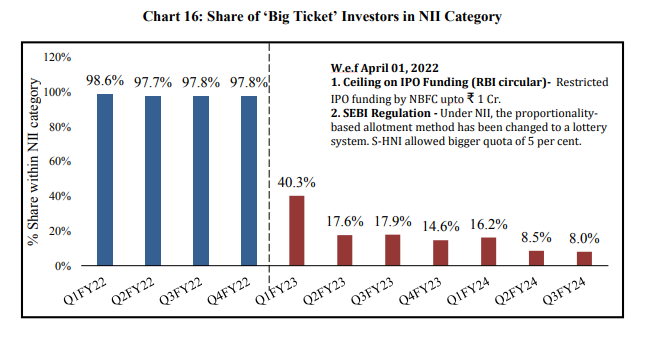
- A reduction in the exit, in terms of the value of shares sold, by “Big Ticket NII Investors,” from about 70% within a week during April 2021-March 2022 to about 25% within a week during April 2022-December 2023.
You can read the full report here: SEBI | Study - Analysis of Investor Behavior in Initial Public Offerings (IPOs)
